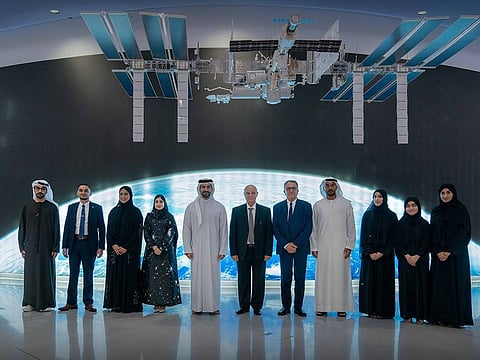Watch: Sharjah enters space sector with launch of new 'Sharjah Sat 1' satellite
Mission includes monitoring X-rays from super hot celestial bodies

Sharjah: The ‘Sharjah Sat 1’ satellite was successfully launched yesterday on the SpaceX Falcon 9 rocket at Cape Canaveral in Florida, USA.
Sheikh Sultan bin Ahmed bin Sultan Al Qasimi, Deputy Ruler of Sharjah, and President of the University of Sharjah, followed a live broadcast of the launch at the Sharjah Academy for Astronomy, Space Sciences and Technology at the University of Sharjah.
He congratulated His Highness Dr Sheikh Sultan bin Muhammad Al Qasimi, Supreme Council Member and Ruler of Sharjah, and the UAE leadership on the launch of Sharjah Sat 1, saying that the UAE has taken successful and steady steps towards space exploration through various missions and is now supported by Sharjah Sat 1.
Sheikh Sultan bin Ahmed said: “We start our year by reaching space, and we commend the efforts of the Sharjah Academy for Astronomy, Space Science and Technology, and we are proud of the Emirati cadres of engineers and researchers, who worked on the completion of Sharjah Sat 1. Today [Tuesday], we see its successful launch into space to perform the expected scientific tasks, after reaching the specified orbit, 550km from sea level.”
Special facilities
Dr Hamid M.K. Al Naimiy, Chancellor of the University of Sharjah and Director-General of the Sharjah Academy for Astronomy, Space Science and Technology, thanked Sheikh Sultan bin Mohammed Sheikh Sultan bin Ahmed for the support to the academy and scientific studies in the field of space, through the establishment of special facilities for these studies such as laboratories, ground stations and the latest simulation programmes that contributed to the launch of Sharjah Sat 1.
The estimated lifetime of the satellite is three years, which could increase, depending on the effect of solar radiation on the layers of the Earth’s atmosphere and its path in low Earth orbit.
Sign up for the Daily Briefing
Get the latest news and updates straight to your inbox


